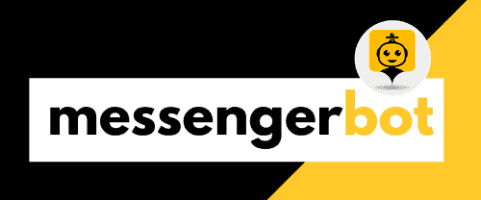In today’s rapidly evolving digital landscape, mastering conversational AI training is essential for businesses looking to enhance customer engagement and streamline communication. This article delves into the intricacies of building engaging AI chatbots that can handle everything from small talk to complex inquiries. We will explore the foundational elements of conversational AI, including how to train a conversational AI effectively, the differences between chatbots and conversational AI, and the various platforms available for implementation. Additionally, we will address common questions such as whether you can self-teach AI and the costs associated with conversational AI solutions. By the end of this guide, you will have a comprehensive understanding of conversational AI technology and the skills necessary to create a successful conversational AI bot. Join us as we unlock the potential of artificial intelligence conversation and equip you with the tools to thrive in this innovative field.
Understanding the Basics of Conversational AI Training
Training a conversational AI involves a systematic approach to ensure that the AI can engage users effectively and provide meaningful interactions. By understanding the foundational elements of conversational AI training, we can create a more responsive and intelligent system that meets user needs.
Key Components of Effective Conversational AI Training
To train a conversational AI successfully, several key components must be considered. These components help in shaping the AI’s ability to understand and respond to user queries accurately.
Determine the Chatbot Use Cases
Identifying specific scenarios where the conversational AI will be utilized is crucial. Common use cases include:
- Customer support
- Lead generation
- Personal assistance
This helps in tailoring the training process to meet user needs effectively. By focusing on these use cases, we can ensure that the AI is equipped to handle relevant interactions.
Define User Intent
Clearly outlining the various intents users may express when interacting with the AI is essential. Understanding user intent is crucial for creating a responsive and relevant conversational experience. Utilizing frameworks like the Intent Classification Model can help categorize intents accurately, ensuring that the AI can respond appropriately to user inquiries.
How to Train a Conversational AI?
Training a conversational AI involves a systematic approach to ensure it can effectively engage users in meaningful dialogues. Understanding the basics of conversational AI training is crucial for developing a system that meets user expectations and business goals.
Understanding the Basics of Conversational AI Training
Conversational AI training encompasses various methodologies and technologies aimed at enhancing the interaction between humans and machines. At its core, it involves teaching the AI to understand and generate human-like responses. This process typically includes:
- Data Collection: Gathering a diverse set of conversational data is essential. This data can include transcripts from customer service interactions, social media conversations, and scripted dialogues. The more varied the data, the better the AI can learn to handle different contexts and user intents.
- Natural Language Processing (NLP): Utilizing advanced NLP techniques allows the AI to comprehend and process human language effectively. This includes understanding context, sentiment, and the nuances of conversation.
- Model Training: The collected data is used to train machine learning models, such as those based on the Generative Pre-trained Transformer (GPT) architecture. This training helps the AI generate coherent and contextually relevant responses.
- Testing and Iteration: Continuous testing and refinement are necessary to improve the AI’s performance. This involves analyzing user interactions and making adjustments to enhance response accuracy and engagement.
For those interested in conversational AI training free resources, there are numerous online platforms offering tutorials and courses that can help you get started.
Key Components of Effective Conversational AI Training
To ensure the success of a conversational AI system, several key components must be integrated into the training process:
- Conversational Design: Crafting effective conversation flows is vital. This includes designing prompts and responses that guide users through interactions seamlessly. Understanding how to make small talk and engage users in casual conversation can significantly enhance user experience.
- Feedback Mechanisms: Implementing systems for users to provide feedback on AI interactions can help identify areas for improvement. This feedback loop is essential for refining the AI’s conversational skills and ensuring it meets user needs.
- Integration with Business Processes: The AI should be aligned with business objectives, such as lead generation and customer support. By integrating with existing workflows, the AI can provide more relevant and timely responses.
- Multilingual Capabilities: As businesses expand globally, having a conversational AI that can communicate in multiple languages is increasingly important. This feature allows for broader reach and improved customer engagement.
For more insights on how conversational AI can elevate customer support, check out our article on elevating customer support with conversational AI chatbots.
Understanding the Basics of Conversational AI Training
Training a conversational AI involves a systematic approach to equip the system with the ability to engage in meaningful interactions. At the core of conversational AI training is the need to develop a model that can understand and respond to human language effectively. This process includes several key components that ensure the AI can handle various conversational scenarios, from simple inquiries to complex dialogues.
Key Components of Effective Conversational AI Training
To create a robust conversational AI, several essential components must be integrated into the training process:
- Data Collection: Gathering diverse datasets is crucial for training conversational AI. This data should encompass various conversational styles, including small talk, formal inquiries, and casual dialogues. The more varied the data, the better the AI can understand different contexts.
- Natural Language Processing (NLP): Implementing advanced NLP techniques allows the AI to comprehend and generate human-like responses. This includes understanding context, sentiment, and intent, which are vital for creating engaging interactions.
- Machine Learning Algorithms: Utilizing machine learning enables the AI to learn from past interactions, improving its responses over time. This adaptability is essential for maintaining relevant and accurate conversations.
- Testing and Iteration: Continuous testing of the conversational AI is necessary to identify areas for improvement. Feedback loops help refine the AI’s capabilities, ensuring it can handle a wide range of queries effectively.
Is ChatGPT a Conversational AI?
ChatGPT is indeed a form of conversational AI, designed to engage users in dialogue through natural language. It utilizes advanced machine learning techniques to understand and respond to user inputs, making it a powerful tool for various applications, including customer support and personal assistance.
Exploring Different Types of Conversational AI
Conversational AI encompasses various technologies, each serving unique purposes. While ChatGPT is a prominent example, other forms include:
- Chatbots: These are often rule-based systems that handle straightforward queries. For instance, Brain Pod AI offers chatbots that can assist with customer service tasks.
- Virtual Assistants: Tools like Amazon Alexa and Google Assistant represent more advanced conversational AI, capable of managing tasks and providing personalized recommendations.
The Role of ChatGPT in Conversational AI Technology
ChatGPT plays a significant role in advancing conversational AI technology. Its ability to generate coherent and contextually relevant responses makes it a valuable asset for businesses looking to enhance customer interactions. By leveraging conversational AI technology, organizations can streamline communication and improve user satisfaction.
How to Train a Conversational AI?
Training a conversational AI involves several key steps that ensure the AI can engage users effectively. Understanding the basics of conversational AI training is crucial for developing systems that can handle various interactions, from simple queries to complex conversations. This process typically includes data collection, model training, and continuous improvement based on user interactions.
Understanding the Basics of Conversational AI Training
At its core, conversational AI training revolves around teaching the system how to understand and generate human-like responses. This involves utilizing natural language processing (NLP) techniques to interpret user inputs accurately. The training process often starts with gathering a diverse dataset that includes various conversation types, such as small talk, customer inquiries, and specific domain-related questions.
Once the data is collected, it is essential to preprocess it to ensure that the AI can learn effectively. This may involve cleaning the data, annotating it for intent recognition, and categorizing responses. After preprocessing, the model can be trained using algorithms that allow it to learn patterns in the data, enabling it to generate appropriate responses during actual interactions.
Key Components of Effective Conversational AI Training
Effective conversational AI training hinges on several components:
- Natural Language Understanding (NLU): This is the backbone of conversational AI, allowing the system to comprehend user intents and extract relevant information from their queries. Tools like Amazon Lex and Google Dialogflow provide robust NLU capabilities.
- Dialogue Management: This component manages the flow of conversation, determining how the AI should respond based on the context of the interaction. It ensures that the conversation remains coherent and relevant.
- Response Generation: The AI must be able to generate human-like responses. This can be achieved through various methods, including rule-based systems or machine learning models that learn from previous interactions.
- Continuous Learning: Post-deployment, the AI should be able to learn from new interactions. This involves collecting feedback and using it to refine the model, ensuring that it adapts to changing user expectations and improves over time.
By focusing on these components, businesses can develop conversational AI systems that not only respond accurately but also engage users in meaningful interactions. For those interested in exploring more about conversational AI technologies, resources like this article provide valuable insights.
Can I Self Teach AI?
Yes, you can absolutely self-teach AI development, especially in 2024, due to the plethora of resources and tools available online. Here’s a structured approach to guide your learning journey:
- Foundational Knowledge:
- Mathematics: Focus on linear algebra, calculus, and statistics, as these are crucial for understanding algorithms. Resources like Khan Academy and MIT OpenCourseWare offer free courses.
- Programming: Learn Python, the most widely used language in AI. Websites like Codecademy and freeCodeCamp provide interactive coding lessons.
- Core AI Concepts:
- Machine Learning: Start with supervised and unsupervised learning. Andrew Ng’s Machine Learning course on Coursera is highly recommended.
- Deep Learning: Explore neural networks and frameworks like TensorFlow and PyTorch. The Deep Learning Specialization by Andrew Ng on Coursera is an excellent resource.
- Practical Application:
- Stay Updated:
- Follow AI research papers and publications. Websites like arXiv.org and Google Scholar can help you access the latest studies in AI.
- Join online communities such as Reddit’s r/MachineLearning or AI-focused Discord servers to network and learn from peers.
- Recommended Reading:
- “Artificial Intelligence: A Modern Approach” by Stuart Russell and Peter Norvig provides a comprehensive overview of AI concepts.
- “Deep Learning” by Ian Goodfellow, Yoshua Bengio, and Aaron Courville is essential for understanding deep learning techniques.
Resources for Self-Teaching Conversational AI
To effectively self-teach conversational AI, consider utilizing free resources that focus on conversational AI training free. These resources can help you develop your skills in creating conversational bots and understanding the intricacies of conversational AI technology.
How Much Does Conversational AI Cost?
The cost of conversational AI can vary significantly based on several factors, including the complexity of the solution, the platform used, and the specific features required. Here’s a breakdown of the potential costs associated with conversational AI:
- Basic Chatbots: Many platforms offer basic chatbot solutions for free or at a low cost, typically ranging from $0 to $50 per month. These are suitable for simple tasks and small businesses.
- Subscription-Based Solutions: For more advanced features, subscription plans can range from $50 to $500 per month. These plans often include additional functionalities such as analytics, integrations, and customer support.
- Custom Solutions: Custom-built conversational AI solutions can cost anywhere from $5,000 to $300,000, depending on the complexity and scale of the project. This includes tailored development, ongoing maintenance, and updates.
- Enterprise Solutions: Large organizations may invest in enterprise-level conversational AI systems, which can exceed $300,000. These solutions often involve extensive customization, integration with existing systems, and advanced AI capabilities.
- Additional Costs: Consider potential extra costs for training the AI, ongoing support, and updates, which can add to the overall investment.
According to a report by Gartner, the demand for AI chatbots is expected to grow significantly, with businesses increasingly recognizing their value in enhancing customer engagement and operational efficiency.
For a comprehensive understanding of pricing models and features, it’s advisable to consult specific platforms and compare their offerings. For instance, Brain Pod AI provides various pricing options tailored to different business needs.
Budgeting for Conversational AI Training and Development
When budgeting for conversational AI training and development, it’s essential to consider both the initial investment and ongoing costs. Here are some key factors to keep in mind:
- Training Costs: Depending on the complexity of the conversational AI, training costs can vary. Utilizing free resources and courses can help mitigate expenses.
- Development Time: The time required to develop and implement a conversational AI solution can impact costs. More complex systems may require a longer development cycle, leading to higher costs.
- Maintenance and Updates: Ongoing maintenance and updates are crucial for keeping the AI effective. Budgeting for these recurring costs is essential to ensure long-term success.
- Integration with Existing Systems: If the conversational AI needs to integrate with existing platforms, additional costs may arise. This integration is vital for seamless operations.
By carefully considering these factors, businesses can create a realistic budget that aligns with their goals for implementing conversational AI technology. For more insights on enhancing customer support with conversational AI, check out this resource.
Conversational AI Certification
Obtaining a conversational AI certification can significantly enhance your understanding and skills in this rapidly evolving field. Certifications not only validate your expertise but also provide you with a competitive edge in the job market. They cover essential topics such as how conversational AI works, the intricacies of conversation design, and the technical aspects of chatbot coding.
Benefits of Obtaining a Conversational AI Certification
One of the primary benefits of acquiring a conversational AI certification is the comprehensive knowledge it imparts. You will gain insights into the key components of effective conversational AI training, including understanding user intents and designing engaging interactions. Additionally, certifications often provide hands-on experience with popular platforms, enhancing your practical skills in deploying conversational bots.
Moreover, certified professionals are often viewed as more credible by employers, which can lead to better job opportunities and higher salaries. For instance, companies like Brain Pod AI offer various AI services that can complement your learning and provide real-world applications of your skills.
Top Certification Programs for Conversational AI
Several reputable organizations offer certification programs in conversational AI. Programs from institutions like Brain Pod AI focus on practical applications and industry standards. Other notable programs include those from IBM and Coursera, which provide a structured learning path and access to expert instructors.
When selecting a certification program, consider factors such as the curriculum, duration, and the support provided during and after the course. Engaging in these programs can significantly enhance your conversation skills and prepare you for a successful career in the field of conversational AI.







